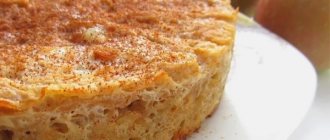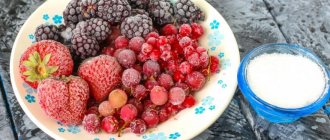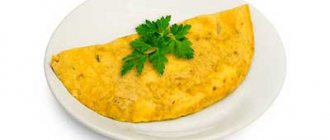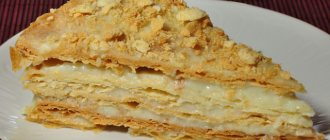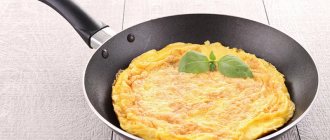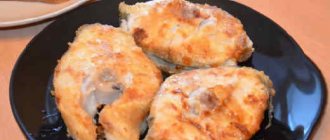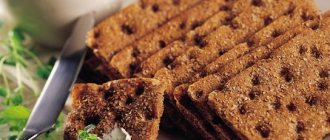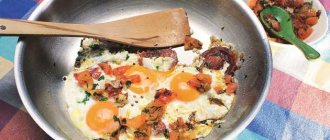Properties of homemade cheese
Nutritional value and composition | Vitamins | Minerals
How much does homemade cheese cost (average price per 1 kg)?
Moscow and Moscow region.
400 rub.
From the name of homemade cheese, it immediately becomes clear what technologies are used in the manufacture of this product. Cheese producers are adopting home cooking recipes to expand the range of their products and meet the demands of a wider range of consumers.
We think it’s no secret that home-cooked meals have always been considered extremely tasty and healthy. People have been making homemade cheeses since time immemorial. Moreover, almost every housewife had her own recipe for homemade cheese. And only over time, manufacturers began to produce such cheese on an industrial scale.
Although it is unlikely that real homemade cheese can compare with store-bought cheese in its taste, aroma or consumer qualities. We invite you to take a closer look at homemade cheese. Firstly, cheese made at home will have excellent taste, nutritional and beneficial properties for the human body.
Secondly, you will receive a guaranteed quality product that will not contain preservatives, chemicals or flavoring additives, which unscrupulous manufacturers often add to cheeses. Thirdly, your own homemade cheese will cost much less than the store-bought equivalent.
And, perhaps, the most important quality of homemade cheese is that it contains all the useful elements, vitamins and organic compounds that milk contains. For example, just half a kilogram of homemade cheese will contain the same amount of protein, lactic fatty acids, vitamins, and other beneficial compounds as 4.5 liters of fresh cow's milk.
Many people are mistaken in believing that homemade cheese is difficult to make on their own. Yes, there are some specifics, but if you really want it, this won’t stop you from trying yourself as a cheese maker. To make cheese at home you will need fresh cow's milk.
In this case, the rule the more the better will work one hundred percent, because The amount of cheese directly depends on the amount of milk. The calorie content of homemade cheese also depends on the milk (from 113 Kcal per 100 grams) that you will use in making the product. The fattier the cow's milk, the higher the calorie content of homemade cheese.
The most delicious homemade cheese is made from fresh country milk, but if you don’t have the opportunity to find it, then full-fat cottage cheese is perfect. By the way, homemade curd cheese is made much faster than that made from milk. Usually homemade cheese belongs to the soft varieties, because For the production of hard cheeses, specific production equipment (press) is required.
What’s distinctive is that the future taste of homemade cheese depends only on you. When preparing, you can add to homemade cheese, in addition to salt, any other ingredients, spices, herbs or herbs, all at your discretion.
Application
Homemade cheese serves as an excellent snack, after which a person remains full for a long time. You can make different sandwiches with it, adding different ingredients to suit your taste. And homemade cream cheese can even be spread on bread.
Market Analytics
- Global cosmetics market 2021: an unprecedented test for the global cosmetics industry
- Top 10 Cosmetic Research and Development of 2021
- 2020 in the beauty industry – innovation without borders
Convenient search for beauty salons on our website
Beauty salons in Moscow Beauty salons in St. Petersburg Beauty salons in Ekaterinburg Beauty salons in Novosibirsk
Latest blog posts on our website
- Naturecream / Properties of the “Sunny” oil itself
- Naturecream / “Sugar” wrinkles - or what glycation can do
- Naturecream / Esterified oils
- Naturecream / Arnica - the magical plant of alchemists
- Naturecream / Tremella Extract - Snow Mushroom Detox for Skin
- Prostye-sovety / How to visually enlarge your lips with makeup
- Naturecream / Apricot kernel oil for face
- Naturecream / MATRIXYL3000 - the best skin elasticity stimulator
- Naturecream / SPF in Natural Oils
- Naturecream / Geranium (Pelargonium) oil for skin health and beauty
Latest forum topics on our website
- Natalya / How to properly make a gelatin mask?
- Mrs._Smith / Badly sunburned! What to do?((
- Ice / Is it necessary to combine fitness classes with a diet?
- Antonova / What can be used for hair loss?
- Radio operatorKat / Who was on a protein diet?
Other articles in this section
| Sour cream 15% (low fat) Sour cream is a common and very popular dairy product. Probably, in the kitchen of every housewife there is a jar of sour cream of a certain fat content and consistency. Sour cream is obtained from milk, or more precisely from the cream formed on it. They are normalized, various fermentation products are added, and then left for a while until the sour cream is ready. Sour cream, which has 15% fat content, is a product of medium calorie content. This is a very nutritious and healthy product, used both for seasoning main dishes and as an independent product. |
| Cottage cheese 0.3% The process of preparing cottage cheese 0.3%, including low-fat cottage cheese, is very simple. The milk is brought to the desired fat content, and then heated and curdled, separating into solid mass and curdled milk. The solid mass is squeezed out of excess moisture and natural cottage cheese is obtained. |
| Low-fat condensed milk with sugar Preserving milk by evaporation was invented by a resident of France, Nicola Apperou. At the time of evaporation, sterilization also occurred. This pastry chef worked in Paris and one day discovered a very interesting fact. When he boiled the juice, it began to be stored in canned form for quite a long time. After that, he began experimenting with milk. As a result, the confectioner realized that after it was boiled, it would be stored in tin jars for a long time. Tin cans were used because glass ones tended to burst when steam sterilized. |
| Cottage cheese 2% Cottage cheese 2% is low-fat cottage cheese, an environmentally friendly product, does not contain GMOs, chemical impurities, or harmful additives. The fat content of cottage cheese is determined depending on the fat content of the milk used. |
| Cheese Chanakh The North Caucasus is considered the birthplace of this type of cheese. The name of the cheese comes from the fact that it is kneaded in special pots called vats. Today, Chanakh cheese is produced mainly by Armenian cheese makers. During production, white wine, honey or syrups are added to the cheese. Chanakh cheese belongs to a variety of pickled cheeses. Thanks to the special brine, the cheeses have a special taste: slightly salty and spicy aftertaste. |
| Natural yogurt 2% Homemade yogurt was first produced in the Balkans. This territory is located in Bulgaria. When housewives realized that already sour milk could retain its properties much longer, they began adding a special starter to the still fresh drink. This is what created the tradition of producing natural yogurt. |
| Farmer's Cheese Farmer's cheese has been produced in France since 1953. It is believed that it was previously made by monks at the Joie Notre-Dame monastery. Farmer's cheese is aged for about five weeks, after which it can already be eaten. The cheese has a medium density structure and a round shape. The diameter of one bar of Farmer's cheese is 20 centimeters and the height is 4 centimeters. |
| Poshekhonsky cheese Poshekhonsky cheese is a hard cheese. This product is made from pasteurized milk with the addition of whey. The mass is poured into special molds and left to mature. |
| Low-fat soy milk Soy milk is made from soybeans. As history tells, this drink first appeared before our era in China. As the legend goes, soy milk was created by the philosopher Liu An. He created it so his mother could taste what soybeans tasted like (she couldn't chew them because she didn't have teeth). |
| Cheese Dzhugas Dzhugas belongs to the group of Parmesan cheeses. It is made in Lithuania, following all the rules and technologies. It is also necessary to pay attention to the fact that Djugas cheese is aged for more than 3 months - this is a special pride of Lithuanian companies. There are also varieties of Dzhugas cheese, depending on the period of its aging during preparation - 12, 18, 24, 36 and 48 months. The color of the cheese also depends on the aging period - it can vary from light yellow to amber-orange. The structure of the cheese becomes hard and grainy. |
Recipe Homemade cheese made from cottage cheese. Calorie, chemical composition and nutritional value.
Nutritional value and chemical composition of “Homemade cottage cheese.”
The table shows the nutritional content (calories, proteins, fats, carbohydrates, vitamins and minerals) per 100 grams of edible portion.
| Nutrient | Quantity | Norm** | % of the norm in 100 g | % of the norm in 100 kcal | 100% normal |
| Calorie content | 285.9 kcal | 1684 kcal | 17% | 5.9% | 589 g |
| Squirrels | 26.2 g | 76 g | 34.5% | 12.1% | 290 g |
| Fats | 17 g | 56 g | 30.4% | 10.6% | 329 g |
| Carbohydrates | 7 g | 219 g | 3.2% | 1.1% | 3129 g |
| Water | 48.5 g | 2273 g | 2.1% | 0.7% | 4687 g |
| Ash | 1.279 g | ~ | |||
| Vitamins | |||||
| Vitamin A, RE | 40.9 mcg | 900 mcg | 4.5% | 1.6% | 2200 g |
| Retinol | 0.039 mg | ~ | |||
| beta carotene | 0.009 mg | 5 mg | 0.2% | 0.1% | 55556 g |
| Vitamin B1, thiamine | 0.011 mg | 1.5 mg | 0.7% | 0.2% | 13636 g |
| Vitamin B2, riboflavin | 0.069 mg | 1.8 mg | 3.8% | 1.3% | 2609 g |
| Vitamin B4, choline | 39.48 mg | 500 mg | 7.9% | 2.8% | 1266 g |
| Vitamin B5, pantothenic | 0.204 mg | 5 mg | 4.1% | 1.4% | 2451 g |
| Vitamin B6, pyridoxine | 0.022 mg | 2 mg | 1.1% | 0.4% | 9091 g |
| Vitamin B9, folates | 1.101 mcg | 400 mcg | 0.3% | 0.1% | 36331 g |
| Vitamin B12, cobalamin | 0.082 mcg | 3 mcg | 2.7% | 0.9% | 3659 g |
| Vitamin D, calciferol | 0.346 mcg | 10 mcg | 3.5% | 1.2% | 2890 g |
| Vitamin E, alpha tocopherol, TE | 0.094 mg | 15 mg | 0.6% | 0.2% | 15957 g |
| Vitamin H, biotin | 3.178 mcg | 50 mcg | 6.4% | 2.2% | 1573 g |
| Vitamin RR, NE | 0.5663 mg | 20 mg | 2.8% | 1% | 3532 g |
| Niacin | 0.03 mg | ~ | |||
| Macronutrients | |||||
| Potassium, K | 22.12 mg | 2500 mg | 0.9% | 0.3% | 11302 g |
| Calcium, Ca | 12.79 mg | 1000 mg | 1.3% | 0.5% | 7819 g |
| Magnesium, Mg | 2.13 mg | 400 mg | 0.5% | 0.2% | 18779 g |
| Sodium, Na | 456.02 mg | 1300 mg | 35.1% | 12.3% | 285 g |
| Sera, S | 29.71 mg | 1000 mg | 3% | 1% | 3366 g |
| Phosphorus, P | 31 mg | 800 mg | 3.9% | 1.4% | 2581 g |
| Chlorine, Cl | 695.21 mg | 2300 mg | 30.2% | 10.6% | 331 g |
| Microelements | |||||
| Iron, Fe | 0.426 mg | 18 mg | 2.4% | 0.8% | 4225 g |
| Yod, I | 3.15 mcg | 150 mcg | 2.1% | 0.7% | 4762 g |
| Cobalt, Co | 1.742 mcg | 10 mcg | 17.4% | 6.1% | 574 g |
| Manganese, Mn | 0.0074 mg | 2 mg | 0.4% | 0.1% | 27027 g |
| Copper, Cu | 16.1 mcg | 1000 mcg | 1.6% | 0.6% | 6211 g |
| Molybdenum, Mo | 2.18 mcg | 70 mcg | 3.1% | 1.1% | 3211 g |
| Selenium, Se | 4.83 mcg | 55 mcg | 8.8% | 3.1% | 1139 g |
| Fluorine, F | 8.67 mcg | 4000 mcg | 0.2% | 0.1% | 46136 g |
| Chromium, Cr | 0.63 mcg | 50 mcg | 1.3% | 0.5% | 7937 g |
| Zinc, Zn | 0.1813 mg | 12 mg | 1.5% | 0.5% | 6619 g |
| Digestible carbohydrates | |||||
| Mono- and disaccharides (sugars) | 0.1 g | max 100 g | |||
| Essential amino acids | |||||
| Arginine* | 0.124 g | ~ | |||
| Valin | 0.121 g | ~ | |||
| Histidine* | 0.053 g | ~ | |||
| Isoleucine | 0.094 g | ~ | |||
| Leucine | 0.17 g | ~ | |||
| Lysine | 0.142 g | ~ | |||
| Methionine | 0.066 g | ~ | |||
| Methionine + Cysteine | 0.113 g | ~ | |||
| Threonine | 0.096 g | ~ | |||
| Tryptophan | 0.031 g | ~ | |||
| Phenylalanine | 0.102 g | ~ | |||
| Phenylalanine+Tyrosine | 0.178 g | ~ | |||
| Nonessential amino acids | |||||
| Alanin | 0.112 g | ~ | |||
| Aspartic acid | 0.193 g | ~ | |||
| Glycine | 0.066 g | ~ | |||
| Glutamic acid | 0.278 g | ~ | |||
| Proline | 0.063 g | ~ | |||
| Serin | 0.146 g | ~ | |||
| Tyrosine | 0.076 g | ~ | |||
| Cysteine | 0.046 g | ~ | |||
| Sterols (sterols) | |||||
| Cholesterol | 89.66 mg | max 300 mg | |||
| Saturated fatty acids | |||||
| Saturated fatty acids | 0.5 g | max 18.7 g | |||
| 14:0 Miristinovaya | 0.006 g | ~ | |||
| 15:0 Pentadecane | 0.002 g | ~ | |||
| 16:0 Palmitinaya | 0.322 g | ~ | |||
| 17:0 Margarine | 0.005 g | ~ | |||
| 18:0 Stearic | 0.138 g | ~ | |||
| 20:0 Arakhinovaya | 0.005 g | ~ | |||
| Monounsaturated fatty acids | 0.782 g | min 16.8 g | 4.7% | 1.6% | |
| 16:1 Palmitoleic | 0.061 g | ~ | |||
| 17:1 Heptadecene | 0.002 g | ~ | |||
| 18:1 Oleic (omega-9) | 0.643 g | ~ | |||
| 20:1 Gadoleic (omega-9) | 0.006 g | ~ | |||
| Polyunsaturated fatty acids | 0.198 g | from 11.2 to 20.6 g | 1.8% | 0.6% | |
| 18:2 Linolevaya | 0.173 g | ~ | |||
| 18:3 Linolenic | 0.009 g | ~ | |||
| 20:4 Arachidonic | 0.016 g | ~ | |||
| Omega-6 fatty acids | 0.3 g | from 4.7 to 16.8 g | 6.4% | 2.2% |
The energy value of homemade cottage cheese is 285.9 kcal.
Primary Source: Created in the application by the user. Read more.
** This table shows the average levels of vitamins and minerals for an adult. If you want to know the norms taking into account your gender, age and other factors, then use the “My Healthy Diet” application.
